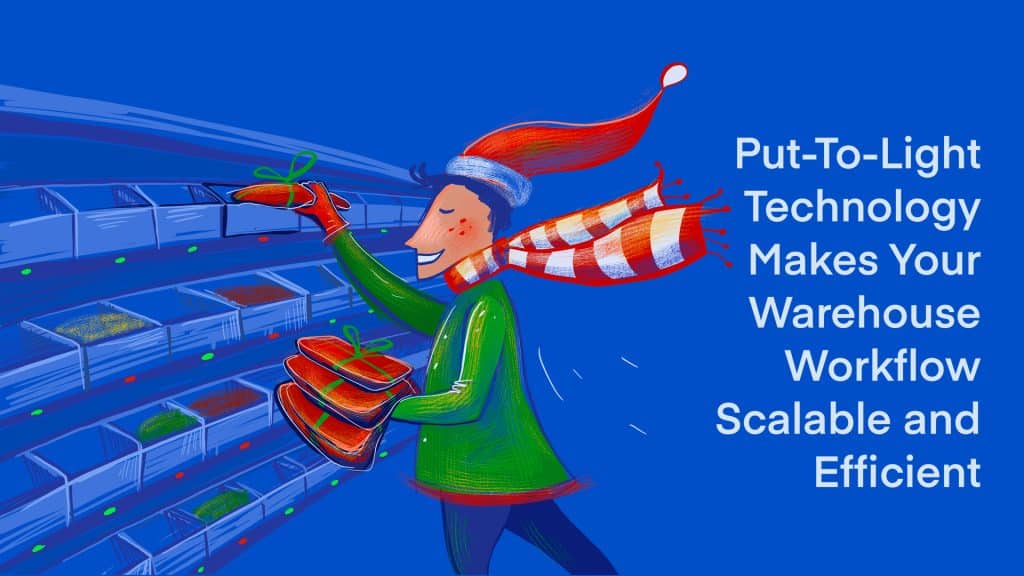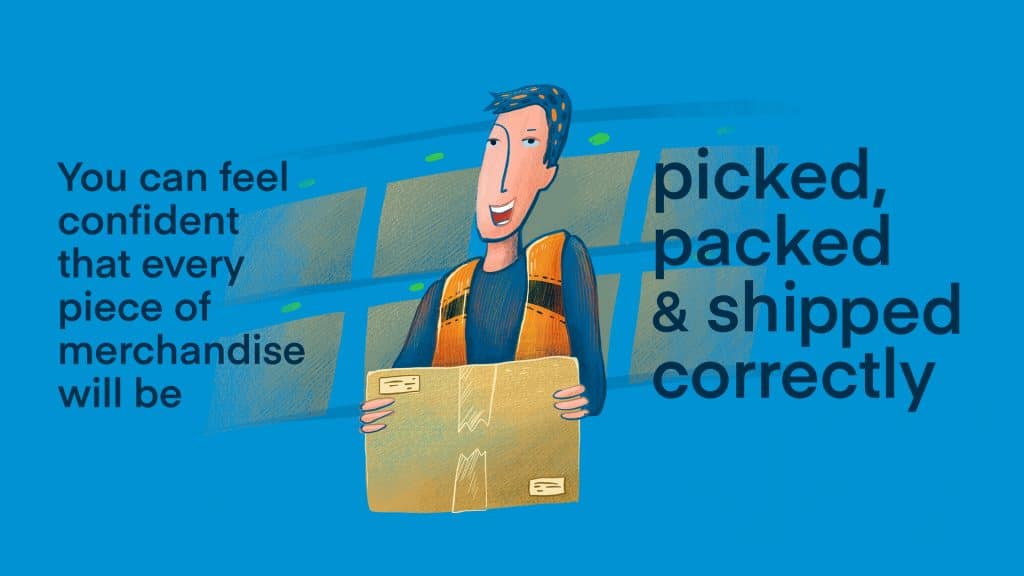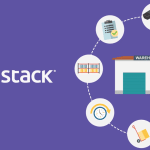
Throughout 2020, many ecommerce sellers have had to account for logistical ups and downs that the industry has never seen. Orders on third-party marketplaces and first-party websites soared.
However, the growing demands for warehouse space have made fulfilling these sales more challenging than usual. These fulfillment issues are expected to grow even more, thanks largely to an unprecedented holiday shopping season, during which more shoppers than ever will make some or all of their purchases online.
Logistics scalability has never been more important. The ability to quickly and reliably process orders is critical for both established ecommerce businesses facing volume fluctuations and retail businesses moving larger portions of their sales online.
That said, with so many opportunities for potential unforeseen delays, it is essential to keep avoidable mistakes from adding to the pile. Eliminating order picking and packing errors should be at the top of the list.
Luckily, there’s a solution. Whether you are looking to expand the output of your warehouse staff or simply streamline procedures to erase costly missteps, put-to-light technology can help you scale your order-picking and packing workflows and keep them error-free.
How Put-To-Light Order Fulfillment Benefits Ecommerce Businesses
Put-to-light systems work exactly as they sound. Typically, a wall of shelves outfitted with multicolored lights is set up. On one side, order pickers retrieve a piece of merchandise, the product’s barcode is scanned, and a light on the wall shows where the product should be placed.
On the other hand, once an order is fully picked and assembled on its assigned shelf, a light indicates that it is ready to be packed and shipped. Scanning the items provides shippers with the packing information and shipping labels they need to get the completed order to its destination.
Naturally, there are variations of the put-to-light concept. Some involve semi- or fully automated picking and packing. Others add additional layers, including pick-to-light-enabled warehousing shelves, lit pathways, and color-changing shipping bins.
Regardless of the scale, a put-to-light workflow offers numerous benefits:
Order Accuracy
First and foremost, nothing matters more than getting customers exactly what they ordered. A light-based picking and packing setup simplifies procedures and makes mispicking an order nearly impossible. That means more positive feedback and fewer returns.
Faster Sorting Rates
A pick/put-to-light system allows multiple workers to fulfill multiple orders simultaneously. This synchronized, simultaneous picking and packing is considerably faster than pulling orders sequentially off a clipboard, shortening order cycle time and improving customer satisfaction.
Reduced Labor Costs
Light-based sorting reduces the overall time per order and, thus, the amount of labor associated with fulfillment. This can mean big bottom-line savings in both the short- and long-term.
Faster Training/Onboarding
Whether you routinely scale your warehouse workforce throughout the year or otherwise experience regular employee turnover, a put-to-light system virtually eliminates the learning curve that comes with traditional order fulfillment practices.
Optimize Space
In addition to being efficient in practice, put-to-light systems are generally also very efficient in their physical footprints. Every item and order has a place, which means there will be no more piles and half-filled boxes strewn throughout your shipping department.
The organized nature of a put-to-light setup simplifies the spatial optimization of your warehouse. With all of these benefits, it’s hard to imagine an ecommerce business not wanting to adopt such a workflow.
Unfortunately, implementing a put-to-light fulfillment system can be challenging for several reasons:
Setup and Integration
As with any new procedural overhaul, building a put-to-light order sorting solution from the ground up can seem daunting. In most cases, constructing both the physical and digital infrastructures requires time and purpose.
Similarly, onboarding your warehouse staff and integrating with your existing network and software platforms can add additional headaches.
Cost
If you’re not careful, the combination of new equipment, additional staff training, and the time it takes to get a new system up and running can add up. For many smaller ecommerce businesses, it can be difficult to shoulder the costs in such a way as to justify the return on investment (ROI).
Commitment
Many put-to-light system providers lock users into binding contracts and lengthy subscription services. This can feel like an additional risk that makes taking the leap much more daunting. We at Descartes Sellercloud recognize the value of warehouse and logistical efficiency for ecommerce businesses of all sizes.
However, we also realize that while there are technologies out there—like put-to-light pick-and-put systems—that could benefit our customers, they remain out of reach. That’s where Skublox comes in.

Skublox Brings Put-To-Light Technology Within Reach
Traditionally, put-to-light systems have been both expensive and challenging to implement. With Skublox, we have made eliminating those barriers a priority. In doing so, we created a powerful, versatile tool that is both financially and logistically within reach for merchants who would not be able to afford and/or adopt traditional put-to-light systems.
In addition, unlike many put-to-light systems, Skublox requires no significant upfront cost or lengthy contract. Skublox is a customizable put-to-light system that natively integrates with our Skustack WMS and Descartes Sellercloud omnichannel ecommerce platforms.
This means that all of your catalog‘s existing SKUs are ready to be processed through Skublox on day one. You can fulfill orders from any of your existing marketplace channels and your company’s own website.
Moreover, you can feel confident that every piece of merchandise will be picked, packed, and shipped correctly—regardless of where the order came from or where it is going.
The setup is simple: connect the Skublox hub to a PC, log in to Skublox with your Descartes Sellercloud credentials, and create your own customized light wall. Trade clipboards and order printouts for smartphones or mobile scanning devices (such as a Zebra TC21) running the Skublox app.
From there, with minimal training, your warehouse staff is ready to experience the convenience of put-to-light logistics—pick, scan, put-to-light, scan, pack, and ship.
Scalability is a key feature of Skublox. Users can create put-to-light walls that are as small or as large as they need. Each Skublox light receives power over ethernet (PoE), making configuration as simple as continuing a daisy chain.
This means that Skublox lights can be added, moved, or reconfigured in many ways—including multiple light wall setups. This way, Skublox is ready to grow and evolve right alongside your ecommerce business’s logistical needs. Get only the Skublox lights you need and add additional Skublox lights as you need them.
Ecommerce is a constantly evolving industry. Make strides of your own by evolving your warehouse’s fulfillment practices with Skublox.
Contact us directly to learn more about how you can set up your Skublox system and start your optimized workflow today.




